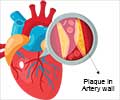Results from two studies indicate that elevated nonfasting triglyceride levels are associated with cardiovascular events.
According to studies JAMA,results from two studies indicate that elevated nonfasting triglyceride levels are associated with cardiovascular events such as a heart attack, with one study finding that triglyceride levels measured after fasting does not show this association.
Triglyceride levels are usually measured in the fasting state, which could exclude certain types of lipoprotein particles (“remnant” lipoproteins), a possible risk factor for atherosclerosis, according to background information in the article.However, except for the first hours in the early morning, most individuals are in the nonfasting state most of the time.
“Atherosclerosis may be a postprandial [occurring after a meal] phenomenon in which remnant lipoproteins play a dominant role. If this is true, increased levels of nonfasting triglycerides, reflecting increased levels of remnant lipoproteins, may predict risk of myocardial infarction (MI; heart attack), ischemic heart disease (IHD), and death,” the authors write.
Børge G. Nordestgaard, M.D., D.M.Sc., of Herlev University Hospital, Herlev, Denmark, and colleagues tested the hypothesis that very high levels of nonfasting triglycerides are associated with an increased risk of heart attack, IHD, and death in the general population.
The study included 7,587 women and 6,394 men from the general population of Copenhagen, age 20 to 93 years, who were followed up from baseline (1976-1978) until 2004 (average follow-up 26 years).
The researchers found that with increasing levels of nonfasting triglycerides, levels of remnant lipoprotein cholesterol increased. During the follow-up, 1,793 participants experienced a heart attack, 3,479 developed IHD, and 7,818 died.
Advertisement
Among women, the adjusted risk for heart attack increased for each higher category of triglyceride levels (from 1-mmol/L to greater than 5-mmol/L), with the increase in risk (adjusted for other factors) ranging from 1.7 times to 5.4 times, compared to those with triglyceride levels of less than 1-mmol/L.
Advertisement
“We found that nonfasting triglyceride levels independently predict MI, IHD, and death particularly in women. These findings may reflect the effects of remnant lipoproteins and therefore may be of considerable interest when designing future trials of agents aimed at reducing triglyceride levels or attenuating atherogenic metabolic abnormalities.
If our findings are confirmed, clinical care might be simplified by using nonfasting lipid profiles for atherosclerosis risk prediction,” the researchers conclude.
Contact the JAMA/Archives Media Relations Department at 312-464-JAMA or email: [email protected].
Source-Eurekalert
JAY/M






